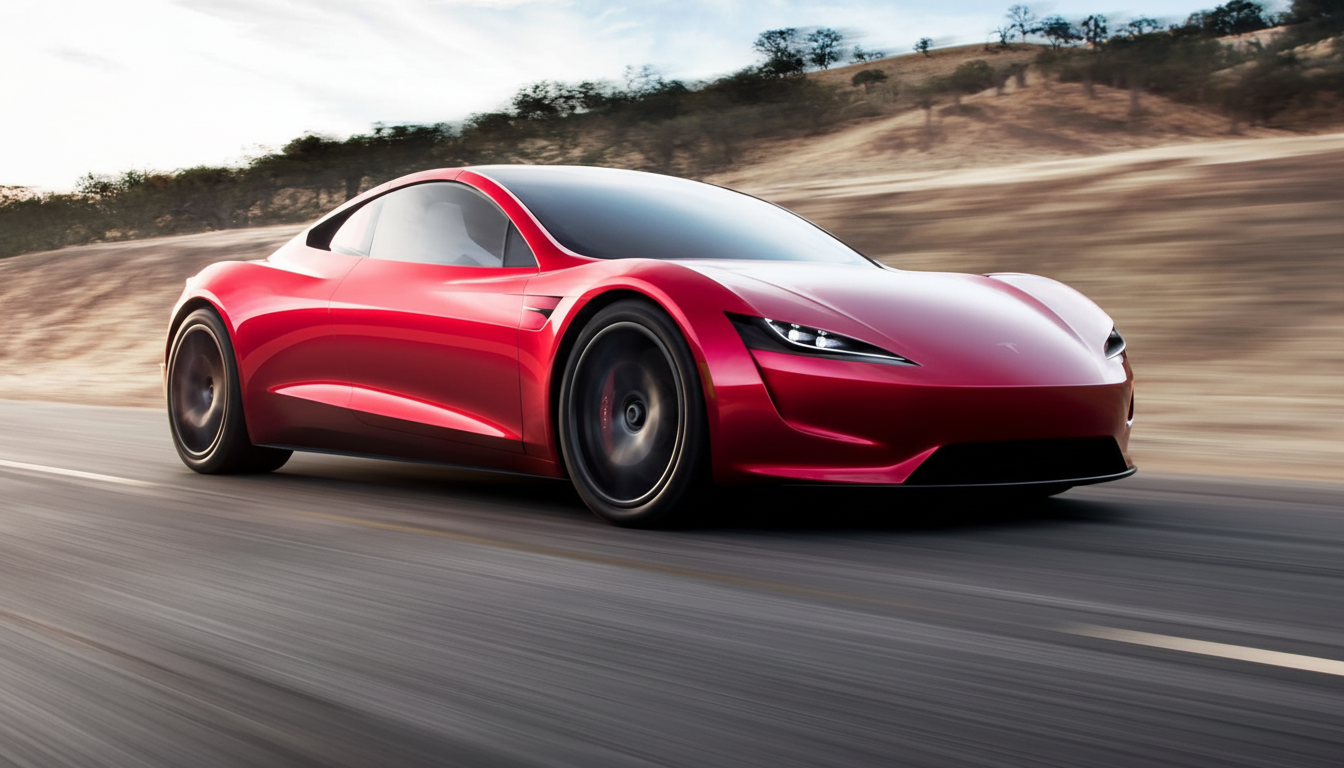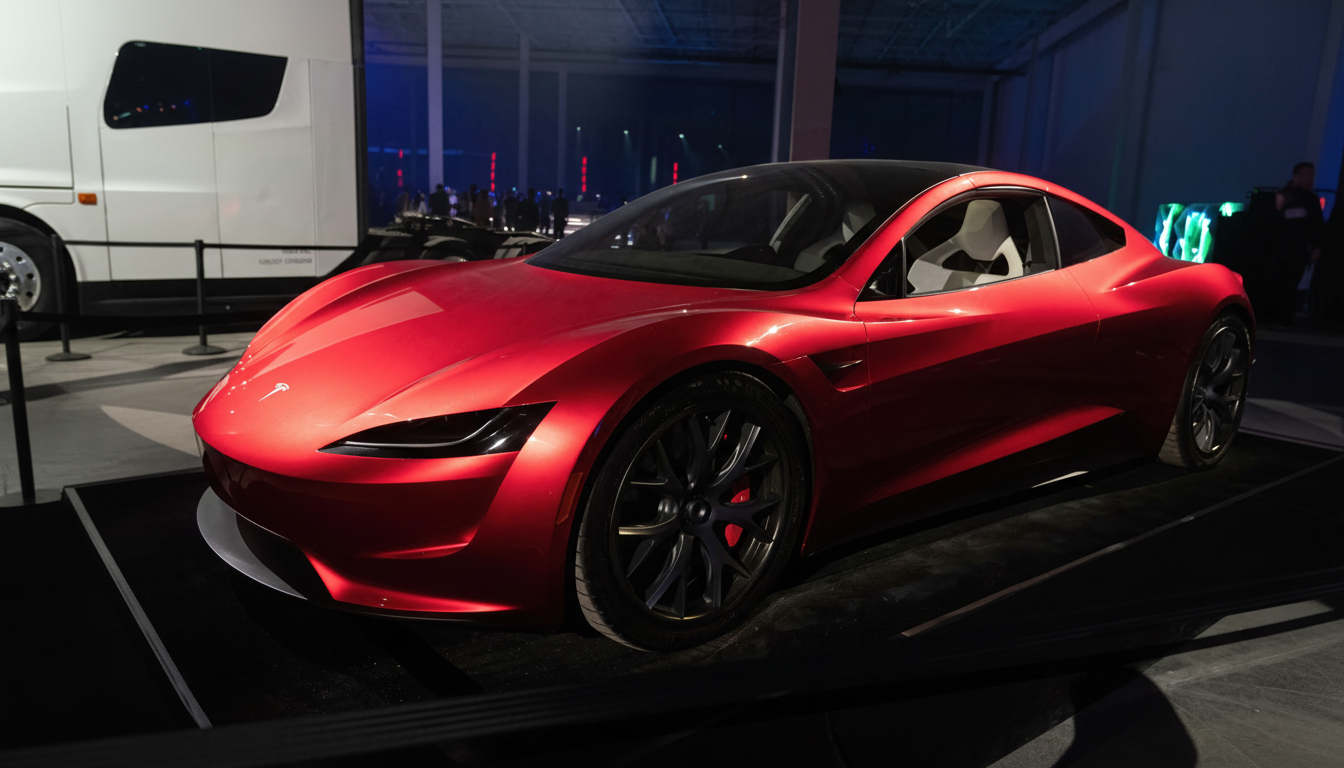Elon Musk says Tesla is planning to showcase a new Roadster prototype before the end of 2025, calling the event “unforgettable.” The remarks, made during a broad conversation on The Joe Rogan EXperience, put a spotlight on a vehicle that has been postponed several times, one that many have already written off as vaporware.
The second-generation Roadster was pitched as a four-seater supercar with unbelievable statistics: a sprint to 60 mph in under two seconds, a range of 620 miles, and a tri-motor powertrain. Tesla began taking reservations years ago, with standard bookings and a $50,000 Platinum Series founders’ version that required a $250,000 deposit. Timeframes for the start of production were moved back as Tesla focused on volume vehicles and wrestled with supply chains and battery manufacturing. Roadster’s development has always been tied to innovations in technology and manufacturing. Musk has mentioned the 4680 cell and structural packs that have already debuted in other Tesla cars. In posts on X, he also hinted that Roadster could reach 60 mph in less than one second thanks to battery, traction, and powertrain architecture beyond current abilities.

Musk’s teaser recording indicates that the exhibition will involve a system different from what was first designed. Previously, he had alluded to a “SpaceX option” using cold-gas thrusters to boost acceleration. The engineering basics are clear: even with the stickiest road tires, acceleration is naturally limited to roughly 1 g of grip. To exceed that, it will take added downforce, dynamic switching, or off-board thrust.
Any such systems would raise practical questions. How many frequent launches might the Roadster handle before it’s necessary to recharge the compressed gas? How do firms view rocket-adjacent devices on public roads? A profitable business would pay close attention to crash safety and road safety. Emissions and noise would also be research topics. One thing is for sure: a one-of-a-kind showstopper is one thing; earning the right to sell in the real world is another.
The benchmarks are on the move. According to MotorTrend and Car and Driver, the Rimac Nevera and the Pininfarina Battista have each achieved sub-two-second 0–60 mph runs as well as quarter miles in the 8s. The Tesla Model S Plaid is a top performer, posting a roughly two-second 0–60 mph sprint and a nine-second quarter mile. To redefine “quick,” the Roadster will have to beat these figures in repeatable, instrumented tests. Top speed, thermal durability, and brake life are important considerations. Peak output is typically associated with robust cooling, large rotors with high-temperature pads, and software that resists power fade. Delivering top-tier performance is difficult; doing it consistently is far more challenging.
From prototype showcase to production at quality and cost
Even if the demo wows, the next step is building customer cars at quality and cost. Low-volume, carbon-intensive vehicles are expensive to engineer and validate, and their economics differ sharply from mass-market sedans and crossovers. Tesla’s recent earnings calls have emphasized margin discipline and efficiency; allocating resources to a niche flagship must fit within that narrative.

Key milestones to watch:
- Running prototype in public
- Independent media rides or instrumented tests
- Regulatory sign-offs
- Clarity on final specifications
These underlying data—battery chemistry and pack capacity, curb weight, and aero details—will reveal whether Tesla is targeting all-out range, repeated peak power, or an eye-catching launch mode that grabs headlines.
Why the Roadster still matters for Tesla’s tech and brand
For Tesla, the Roadster is a symbolic trophy car. It’s a technology demonstrator that could showcase advancements in batteries, high-voltage power electronics, and software controls that later trickle down to mainstream models. That’s what the original Roadster did a decade ago; today it’s a tougher act, with major automaker rivals already shipping electric hypercars. Expectations are high, and memories are long. Well-known reservation holders publicly aired their grievances after years of waiting ahead of the demo, and many fans have seen Tesla’s timelines slip in the past, from Semi to Cybertruck. If Tesla can land a credible, independently validated Roadster demo by the end of the year and chart a realistic path to production, it would infuse new energy into a flagship that has been sitting in concept limbo.
For now, Musk has kept it straightforward: the demo is imminent and should be unforgettable. In the meantime, the public and the industry will find out whether the Roadster can convert sensational statements into verified facts or customer deliveries.

